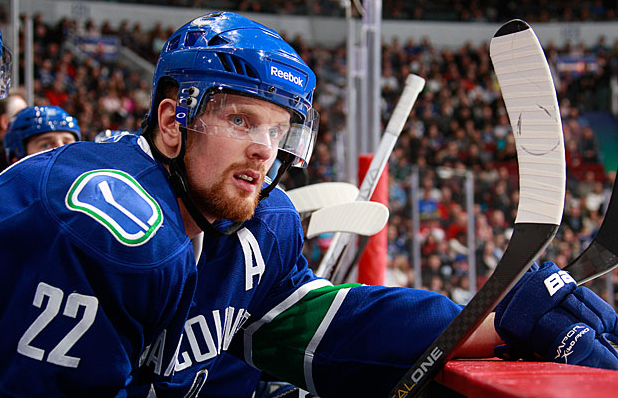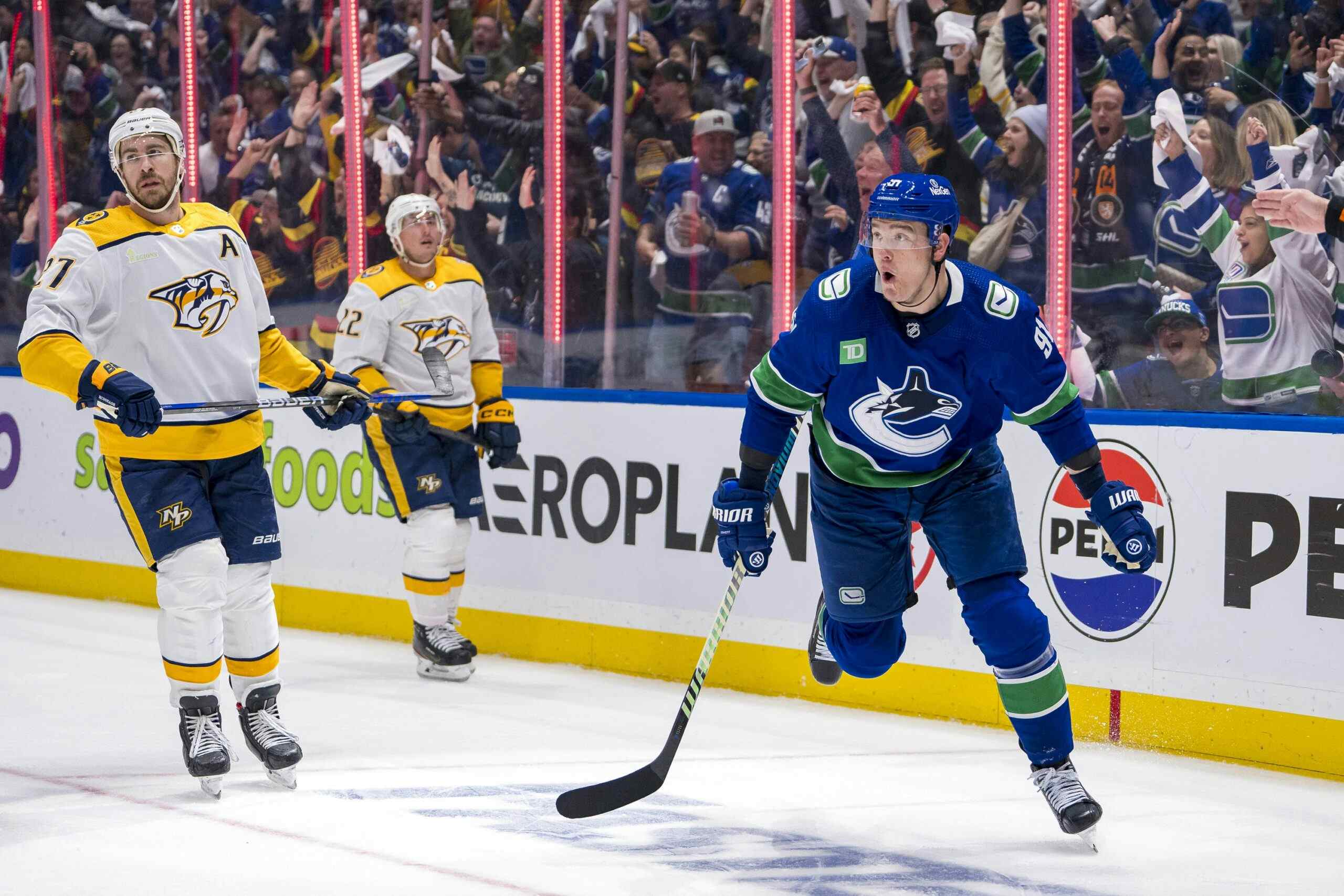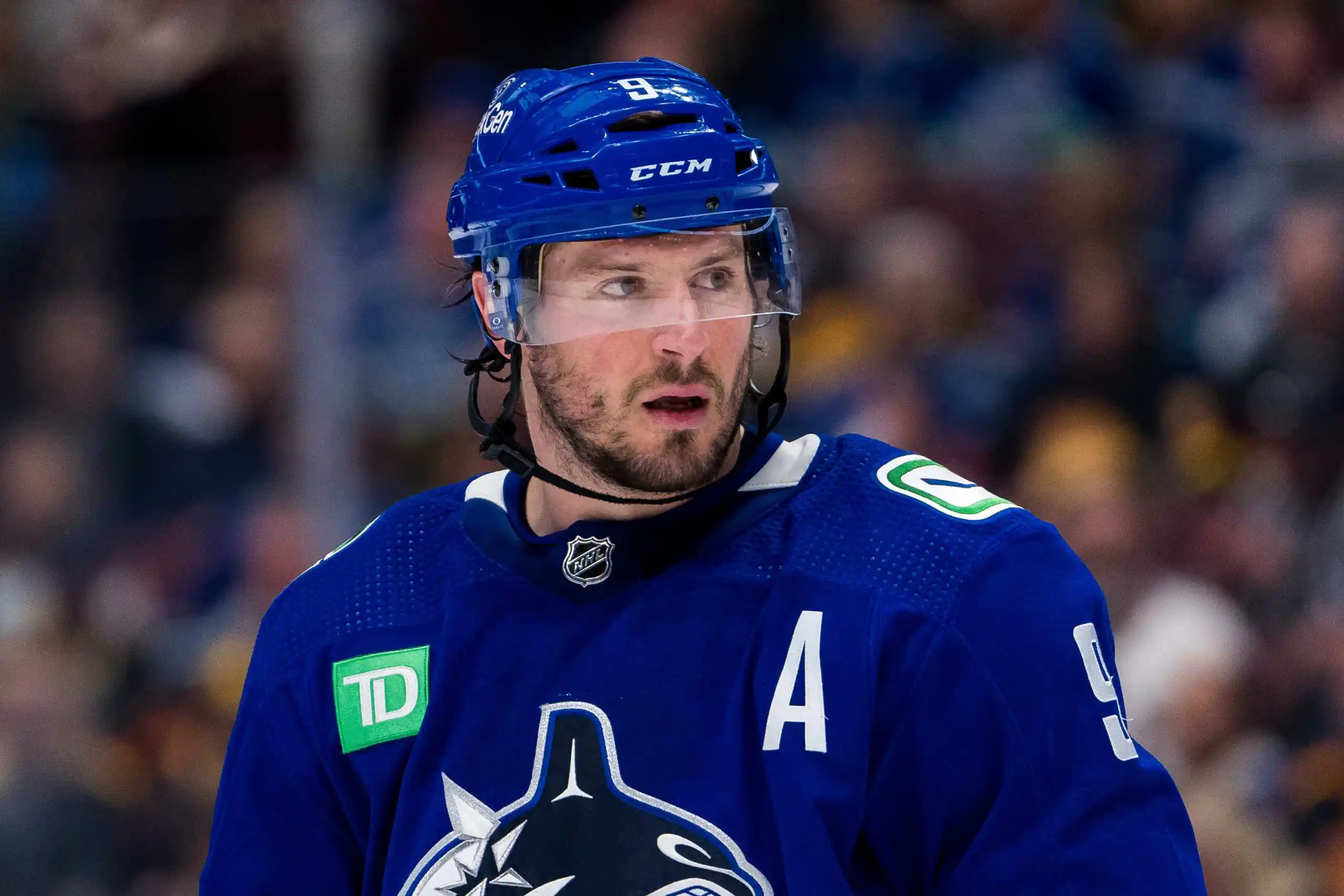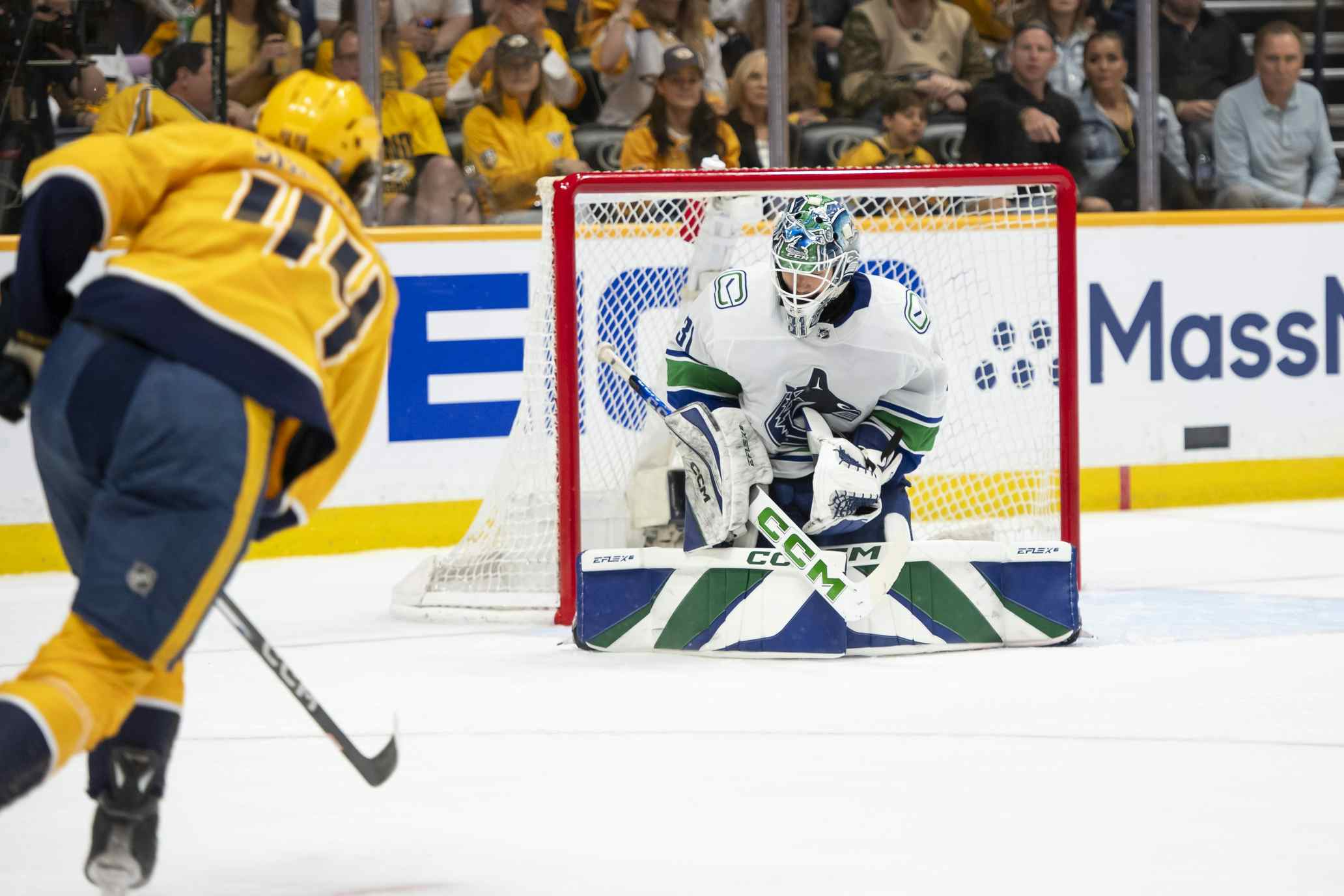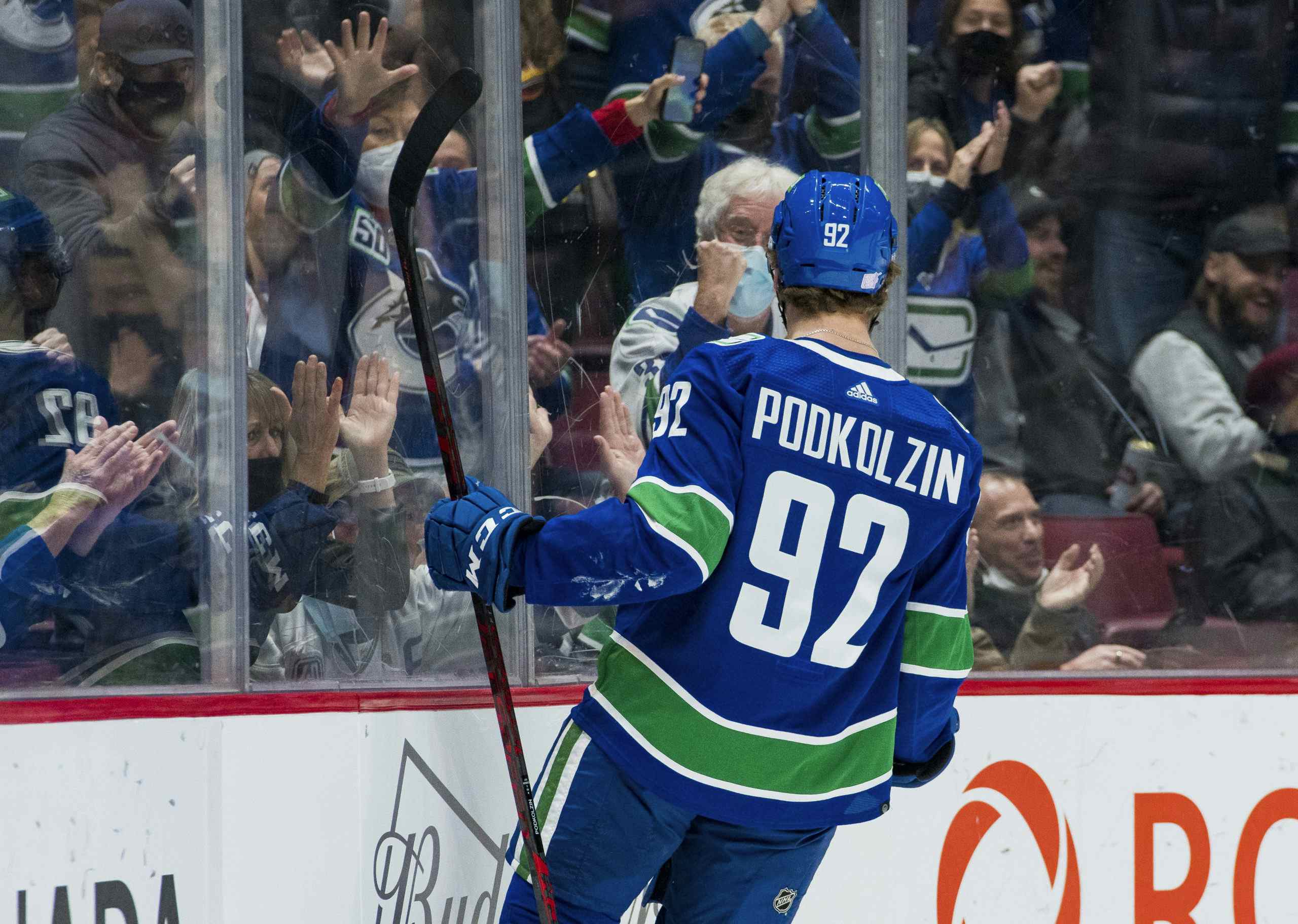What has happened to the Canucks power-play?
During the entirety of the Mike Gillis era, the Canucks have boasted a polished, effective and deadly power-play. Along with stellar goaltending the Canucks’ ability to consistently "make opponent’s pay" with the man-advantage has been a decisive part of the team’s ability to consistently outperform their puck possession numbers. A power-play that generates shots at a top-ten rate and capitalizes frequently is an ingrained feature of this Vancouver club’s DNA, and perhaps we took that for granted prior to the start of this lockout shortened season.
For whatever reason, the Canucks appear to have taken a monumental step backwards this season at five-on-four. Forget the middling conversion rate (20th in the league as of this writing) since that tells us more about the symptoms than the ailment. What’s really concerning from my vantage point is the team’s complete inability to generate shots on net in five-on-four situations. In fact, the underlying shot data suggests that Vancouver might have the second worst power-play in the entire league so far this season…
Why has Vancouver’s power-play effectiveness atrophied so dramatically this season? Read on past the jump.
Let’s begin, as we often do, with the data. I’ve put together a table breaking down Vancouver’s power-play performance over the past five seasons by several different metrics. The table is broken down by 5-on-4 shot rate (shots per sixty minutes in a five-on-four game state), power-play shooting percentage, and then your stadard power-play conversion rate (or just power-play percentage).
Let’s take a look:
| Season | 5-on-4 Sh/60 (NHL rank) | PP Shooting % | PP Conversion % |
|---|---|---|---|
| 2013 | 40.9 (29th) | 12.9% | 15.9% |
| 2011-12 | 56.1 (3rd) | 13% | 19.8% |
| 2010-11 | 56 (5th) | 15.8% | 24.3% |
| 2009-10 | 54.6 (8th) | 14.3% | 20.9% |
| 2008-09 | 51.7 (9th) | 12.9% | 18.8% |
Data in this table compiled from nhl.com and behindthenet.ca.
The first thing that should jump out at you is the massive fall in shot-rate this season. Seriously you could have three Steve Bernier clones and the Sedin twins on the power-play and being 29th in the league in shot-rate would still be baffling. But we’ll round back to this, first let’s dive into the bottom parts of the table and discuss Newell Brown.
Granted, Vancouver’s power-play was effective before Newell Brown joined the coaching staff and began to run the special teams units prior to the 2010-11 season. Still, there can be no real question about his success – it was immediate and rather impressive. To that end, Newell Brown’s tactical innovations were many: he loaded up the first unit installing Ryan Kesler with the Sedin twins. It was an effective adjustment.
Brown’s power-play units also pioneered the "zone-entry drop pass", much to the chagrin of some Canucks fans. Sure the zone-entry drop pass was a Mike Babcock original but Newell Brown relied on it in a way no one previously had. Basically if the drop pass zone-entry were the Weekend Update desk on SNL, Mike Babcock was Chevy Chase to Newell Brown’s Dennis Miller.
Brown also installed a more fluid power-play formation. It looks to me like the Canucks have, over the past two and a bit season, regularly and quickly rotated between an umbrella formation, a standard spread formation, and a 1-3-1 depending on puck location. The constant rotation and formation variety has served to confuse opposing penalty-kill units and goaltenders. Pretty much immediately the Canucks went from being a good power-play team to an excellent one.
In both of Newell Brown’s complete seasons coaching the power-play, the Canucks generated shots at an "elite" rate with the man-advantage and were at or near the top of the league in total power-play goals scored and conversion rate. The power-play withstood the losses of some quality power-play personnel too without missing a beat as guys like Mikael Samuelsson and Christian Ehrhoff moved on without a dip in shot rate.
This season, Vancouver can’t seem to generate shots on the power-play at even an average rate and it’s hurting them. If the Canucks can’t score on the power-play or even threaten their opponents, it throws the whole gameplan out of whack and also in theory exposes the twins to more cheap shots from the opposition’s third-liners.
There’s a couple of things going on here that I think are worth pointing out. First of all, for the past five seasons Ryan Kesler has been Vancouver’s most efficient power-play goal scorer (yes, more efficient than Daniel Sedin). Secondly, he’s been Vancouver’s leading shooter on the power-play for the past three seasons – in fact, he led all Canucks forwards in 5-on-4 shots taken despite playing on the second unit during the 2009-10 season.
Harrison Mooney described the impact of Kesler’s relative "impatience" on the power-play a couple of weeks ago:
We joke about Henrik and Daniel’s love of passing, but there’s an element of truth in there. As pass-first players, they’ve always lacked a little urgency. They’re always looking to make that one extra pass, to open up a larger shooting lane or more net, hoping to set up that perfect shot. It’s what makes them such incredibly playmakers, and as two of the NHL’s most productive players, they’ve certainly earned a pass when it comes to their approach. But their patient, measured way of generating offence can leaves viewers downright aneurysmal when there’s a clock counting down from two minutes. I think we’ve all seen the Sedins show about this much desire to score on powerplays when they’re trailing by one.This where Ryan Kesler comes in. The Canucks’ special teams took a massive step forward in 2010-11 when Newell Brown moved Kesler from the second unit to the first, and I’d argue that the big difference Kesler brought was a hair-trigger. Kesler is the Sedins’ polar opposite, a bull-headed, shoot-first player so arrogant he thinks his shot will hit the back of the net from just about wherever he releases it.
Basically with Ryan Kesler on the shelf the Canucks are down their highest volume shooter with the man-advantage. That’s tough enough, because you’re ultimately going to have a less effective shooter replacing his shots, but it’s also only half the story here.
Compounding the shot-rate issues that Ryan Kesler’s absence imposes, the Canucks’ second most efficient power-play scorer is altogether too reluctant to pull the trigger this season (either that, or he’s being mis-used). Jeff Paterson wrote about Daniel’s lack of power-play shots, and resultant lack of power-play production, on Wednesday:
Daniel Sedin logged 7:54 of power play time on Tuesday night. He did not register a power play shot on goal. And he hasn’t in any of the team’s past four games. In fact, Daniel’s last PP shot on goal came in the 8-3 loss in Detroit on February 24th. That is his only PP shot in the past 27 times the Vancouver Canucks have had the man-advantage. Stop and think about that. The team’s leading goal-scorer has put one puck on net the last 27 times the Canucks have worked on the power play.It’s shocking and yet it shouldn’t be a huge surprise because that’s the way Daniel’s season has gone so far. Incredibly he has a grand total of seven power play shots on goal. The Canucks as a team have had 88 power play opportunities — and save for a brief one with overlapping penalties, it’s safe to assume that Daniel has been on the ice for each and every chance the Canucks have had with the man-advantage. And he’s amassed a staggeringly-low total of seven power play shots.
Looking at video, Daniel Sedin has been used all over the place on Vancouver’s man-advantage units this season – he’s played the point on occassion, he’s lined up on the half-wall and cycled downlow with Henrik, and he is almost always Vancouvers guy in the high-slot when the power-play rotates to a 1-3-1-type formation. His left-handed shot isn’t ideally suited for Ryan Kesler’s slot on the opposite half-wall from his brother Henrik, but if I was to recommend one power-play adjustment to the Canucks it would be to give Daniel a shot there, and design a couple of set-plays to get him more scoring opportunities.
Beyond that, it’s probably worth noting that the Canucks power-play has a relatively high-shot rate (albeit in a small sample) when Jannik Hansen and David Booth are on the ice. As such, if the power-play continues to struggle, I might consider giving them a look on the first-unit over Jordan Schroeder.
Finally, no Canucks defenseman has as much power-play upside – at least in terms of goal production – as Jason Garrison does. Yes, Jason Garrison looked lost on the power-play in the early going this season and his left-handed shot does eliminate the "D-to-D one timer" that the Canucks utilized frequently when Sami Salo and Alex Edler manned the points on the power-play. But you know what, the best the Canucks power-play has ever looked was in the first half of 2010-11 when two left-handed shooters in Christian Ehrhoff and Alex Edler manned the points.
Garrison’s blistering point shot remains accurate enough and deadly. I tend to think that it’s just the type of disruptive influence that Vancouver’s struggling power-play could use, particularly because the Sedin twins are so good at taking advantage of rebounds and ricochets off of the boards to generate puck movement and further scoring chances.
Whatever fix Newell Brown and the Canucks are working on – and I’m sure they have a better plan than I do – they’ll need to iron this issue out if they hope to make any noise in the postseason. This is probably the best five-on-five team that the Canucks have had in the Mike Gillis era, even though they’ve been without their pocket pair of five-on-five aces (David Booth and Ryan Kesler) for most of the season. It would be a crying shame to see the Canucks power-play – an area of the game that the Canucks have long excelled in – continue to drag them down.
Recent articles from Thomas Drance

